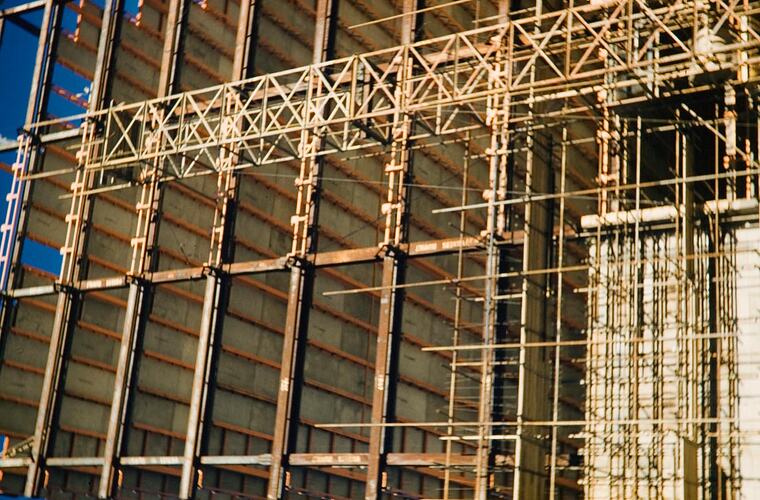The Rigid Frame Analysis programs calculate, for any multi-storied, rigid framed structure, the joint rotations, storey translations, and end moments in each member, for a number of columns 'm' and a number of stories 'n'. The product 'mn' must be less than 150.
The programs are based on solution by successive approximations of the slope-deflection equations for each structural frame. Separate analyses are carried out for each of the vertical and horizontal loading conditions. The programs require only the right-hand and lower member stiffnesses, and the fixed-end moments for each joint, and the incremental lateral load and the height for each storey.
The series of simultaneous equations representing the rigid framed structure are solved by relaxation methods, that is, certain values are assumed originally for all of the joint rotations and unit translations, the residual of each equation is calculated and either the joint rotation or unit translation is adjusted so that this residual becomes equal to zero. When all residuals become simultaneously equal to zero, the system of equations is solved.
Results are punched on 5-hole paper tape, which can then be printed out using the Flexowriter.
These programs have been used extensively by structural engineers to the extent that more than twenty multi-storey buildings have been analysed in one or more frames.
The five Rigid Frame Analysis programs are:
T515.1 Total Moments
T515.2 Wind Loads
T515.3 Incremental Moments
T515.4 Produce Machine Data
T515.5 Incremental and Data Moments
More Information
-
Keywords
-
Authors
-
Article types
